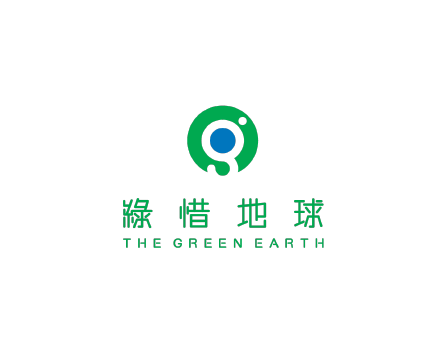An Alternative Model On A Market Basis For Producer Responsibility Scheme On Plastic Beverage Containers (PPRS) – The Green Earth’s Response
 28 Jul 2022
28 Jul 2022
- Category
- Keywords
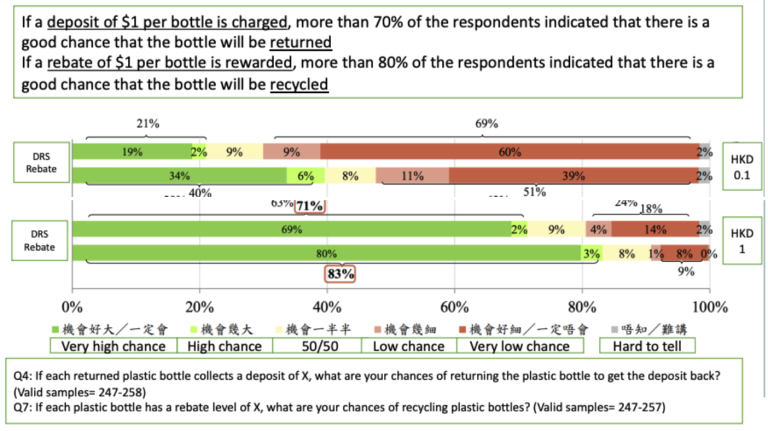
Dear Permanent Secretary for the Environment / Director of Environmental Protection, Members of the Waste Management Policy Group of EPD,
An Alternative Model on a Market Basis for Producer Responsibility Scheme on Plastic Beverage Containers (PPRS) – The Green Earth’s Response
Since 2016, The Green Earth (TGE) has been pushing for a Producer Responsibility Scheme on Plastic Beverage Containers. In 2021, the Environmental Protection Department’s (EPD) initial PPRS proposal sparked discussions within the industry regarding the acceptable rebate level for single-use plastic bottles. The consultation triggered more than 4,600 citizens and organisations to submit their views, while more than 2,000 recorded link clicks on TGE and the alliances’ social media platform to the page offering views to EPD.
TGE welcomes, albeit with caution, the latest alternative PPRS framework that is proposed in June 2022. TGE has the following concerns that may hamper the success of PPRS:
– Low refund values can hardly encourage wider citizens’ participation
– The unambitious initial recycling target lags behind that of the world
– The scheme has overlooked the source reduction targets
– Risk of shifting responsibilities from bottlers to Scheme Operators (SOs)
– The scheme has excluded other types of beverage containers from the whole picture
The following sections further elaborate TGE’s demands for an effective PPRS. A summary of comments per section in the document “Possible Alternative: Operation Framework on a Market Basis” received by email on 6 June 2022 is tabulated in Appendix A.
Moreover, TGE released the third annual brand audit findings (2020-2021) on World Environment Day 2022 to address the environmental crisis of waste plastic bottles worldwide by calling on the local and even the mainland beverage producers and the government for immediate action. For details of the research findings, please refer to Appendix B.
Should you have any enquiries, please contact my colleague Edmond Lau at 3708 8380 or by email at [email protected].
Thank you for your kind attention.
Edwin Lau, MH
Founder & Executive Director, The Green Earth
27 June, 2022
1. The minimum deposit value should be at least $1
In 2021, The Green Earth and other green groups conducted telephone interviews with more than 1,000 randomly selected Hong Kong people. The results showed that the government’s proposed 10-cent rebate value is not providing enough incentives for Hong Kong People to recycle their beverage plastic bottles. A high enough economic incentive is the cornerstone for behavioural change regardless of citizens’ income and social status. Therefore, green groups have been suggesting a minimum refund value of one Hong Kong dollar. Also, Beverage Producers and Retailers should inform customers of their deposit value shown on the beverage bottle, the purchase receipt and the price tags displayed on the shelf.
The graph extracted from the survey indicates that only an HK1-dollar refund value could trigger more than 80% of Hong Kong people to recycle. For more details of the study, please refer to the link below.

Source: PORI (In Chinese, link: https://bit.ly/3ncAvfQ)
TGE reviewed the practices of countries implementing PPRS, including Germany, Denmark, the United States (New York) and Australia (New South Wales), etc. The refund values of bottles range from a minimum of HK$0.3 to a maximum of HK$3.14. The average value is HK$0.93. Considering Hong Kong’s economic development status, HK$1 should be the minimum refund value for citizens’ participation.
2. The Recycling Target should be 70% in 2025 and rise to 90% in 2027
The alliance, Drink Without Waste, set up by the local beverage producers, retailers and green groups in Hong Kong, had jointly declared a recycling target of 70% for plastic PET bottles and over 90% for metal cans to be recycled by 2025. The government should not lag behind the industry and set a lower recycling target of 40% in the first year after the enactment of PPRS.

Source: DWW (Link: www.drinkwithoutwaste.org)
The Green Earth has analyzed 18 countries and regions with adequate experience in executing beverage containers PRS. They have an average of 75% recycling target, and most of them set their recycling targets to at least 70%. Refer to Appendix C for details.
The Hong Kong Government should not set a laid-back target that lags behind the industry and other countries/regions. Instead, an environmentally responsible government should be aggressive enough and lead the industry by asking for a 70% PET bottle recycling rate by 2025 and a 90% by 2027.
3. Sound penalty for Source Reduction and Recycling
The Secretary for the Environment with the Environment Bureau (ENB) announced the Waste Blueprint for Hong Kong 2035 in 2021 and stressed a per capita waste reduction of 40 – 45% by 2035. The Green Earth believes an adequate level of penalty to beverage producers would help in source reduction of single-use bottles and enhance effective recyclables collection.
A Pigouvian tax system should be introduced to PPRS—- when the target recycling rate is not fulfilled in a year, both SOs and beverage producers should be penalised for the shortfall. Alternatively, PPRS legislation could plan for, say, doubling the minimum refund value for the next year when the target recycling rate is not reached.
On the other hand, the government could set certain incentives to encourage the reuse model at beverage products’ point of sales to reduce waste generation. Beverage producers should at all times bear their responsibilities and cannot be exempted from the responsibility of reaching recycling targets of the year.
4. An Open and Accurate Auditing System
Recycling rates data should be audited per quarter by independent third-party consultants for in- time data analysis and release. The overall recycling rates should be announced annually on an open data platform for public review. For quality auditing, the formula of recycling rate should be revised as follows:

Also,

Note 1: Bottles incinerated at integrated waste management facilities or buried in landfills should be excluded from the recycled containers data.
Note 2: Qualified clean beverage containers received at various designated collection spots should be made fragmented immediately to avoid double counting of returned bottles.
Note 3: There is too much room for fraud with litre-volume-based auditing, producers might be under-charged for the ‘number’ of containers placed on the market. The recovery rate shall not be calculated per litre volume of beverages distributed since litre-volume data does not consider products in different container sizes, nor the container design.
5. PPRS should avoid a narrow vision of a Bottles-only System
Since 2019, the market has been proactive in providing recycling facilities, eg. Reverse Vending Machines on private premises. Containers other than PET bottles like metal cans, glass bottles and tetrapaks have also been processed by those facilities.
To avoid beverage producers from switching the PET bottles into other types of unregulated containers, PPRS legislation should also cover other types of beverage containers, each with its specific recycling targets and timelines.
Appendix A: A Summary Table of Comments
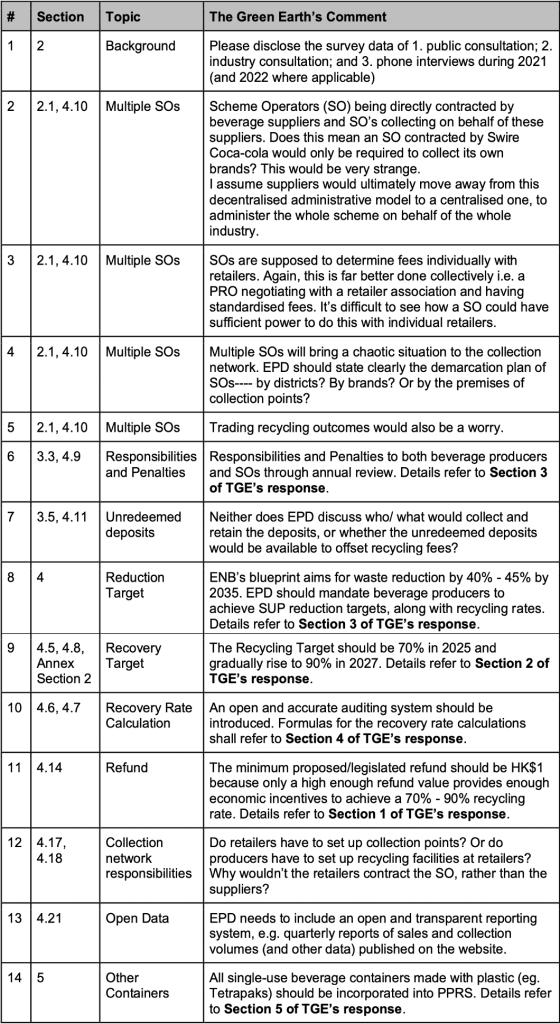
Appendix B: Summary of “Beverage Plastic Bottle Brand Audits” by The Green Earth
(Full Press Release in Chinese here: https://greenearth.org.hk/2022/06/20220605/)
TGE has conducted the “Beverage Plastic Bottle Brand Audits” on shores and beaches for three consecutive years. This time, it has collected a record-breaking 43,726 waste plastic bottles. Consistent with the previous years, the top five plastic bottlers were CR Cestbon, Swire Coca- cola, Vita, Master Kong and Watsons Water, respectively, accounting for 52% of the total. The top 10 most identified brands in Hong Kong beaches 2020-2021 are tabulated below:

Moreover, the audit results also showed that 66% of identifiable products were water beverages (mineral water, distilled water, etc.), while the other 34% are non-water beverages (eg. soda, tea, juices).
To deal with the problem, TGE believes that beverage manufacturers and the government should bear most of the responsibilities. We urge:
● Beverage manufacturers in Hong Kong and Mainland China to set aggressive plastic reduction targets with an implementation timeline. They should also publish data on source reduction and recycling regularly.
● The Hong Kong government should implement the Plastic Beverage Container Producer’s Responsibility Scheme (PPRS) as soon as possible with a refund value of at least HK$1 per bottle.
● Guangdong and Hong Kong governments to strengthen regional marine litter pollution prevention and control.
● Manufacturers and the government set up drinking water facilities widely in the community to reduce the consumption of water beverages packed in single-use packaging.
References (in Chinese):
Appendix C: Recycling targets in 18 countries and regions
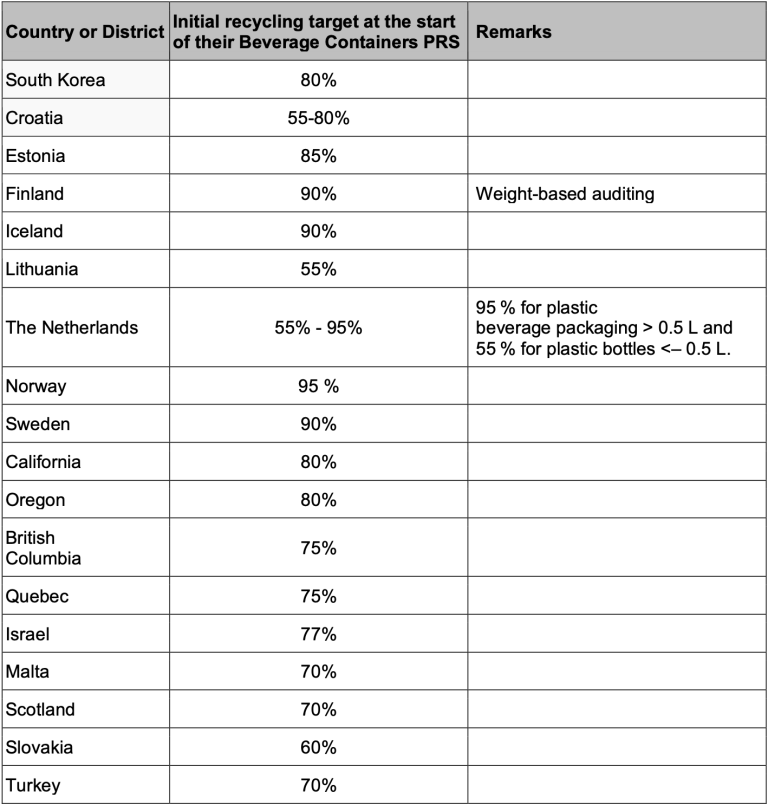


 Green Talks
Green Talks 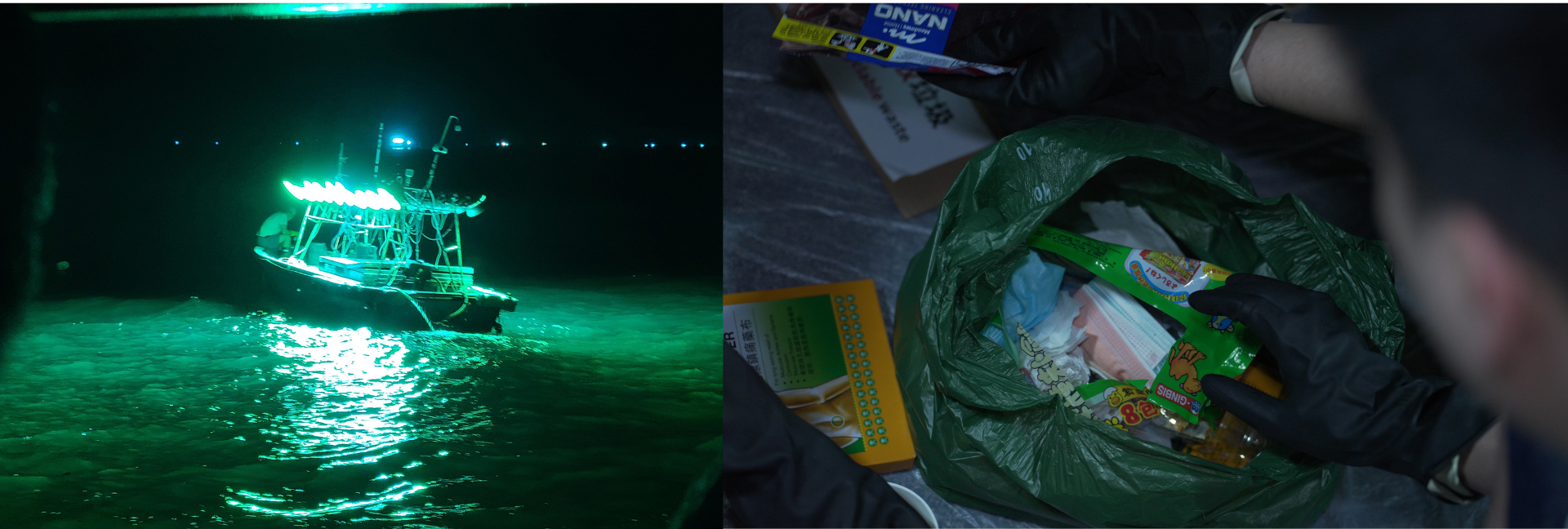

 Back
Back
 07 May 2025
07 May 2025
